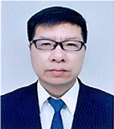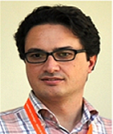IEEE Academy on Internet of Things (IoT)

The IEEE Academy on Internet of Things (IoT) takes existing material about this key subject of interest and combines it with newly developed materials so the learner is guided through a logical continuous path that better ties the concepts and materials together.
The Academy is primarily for members who work in industry and need to understand new technical information quickly so they can apply it to their work.
At the completion of the IEEE Academy on Internet of Things the learner will be able to demonstrate the new knowledge and will earn a certificate.
Technical areas
- Communications Standards now available on ILN
Communication technology is an essential part of the IoT as it allows IoT devices to be connected to each other. Low-power wide-area network (LPWAN) is a promising communication standard solution for long-range and low-power IoT and machine-to-machine (M2M) communications. IoT service layer platform provides a set of common functions for IoT applications and integrates various communication technologies. In order to provide interoperable IoT solutions to the market, such communications and platforms are integrated based on the global standard solution, e.g., 3GPP 5G and oneM2M. 3GPP 5G technologies serve as a key enabler for applications that need high mobility, low latency, and reliability. oneM2M interworks with 3GPP IoT features for better adoption by the devices and applications. This learning path will cover the basic principles of communication technology and practical usage of standardized communication.
- Computing Platforms now available on ILN
IoT computing platforms are essential to the development and deployment of IoT applications. Being naturally distributed, such applications have very challenging and diverse requirements. On one hand, they have components running on embedded devices within the physical world, which are highly constrained in terms of power, computing, and communication resources. On the other, they need in many cases to operate on a very large scale, covering large geographical areas and asking to process a large amount of aggregate data. These requirements call for peculiar IoT software design and new computing paradigms characterized by multi-tier architectures that span across the IoT computing continuum, from tiny embedded sensors/actuators to edge/cloud backend computing platforms. Several solutions are indeed already available to developers and providers as commercial or open-source IoT platforms, which are based on interoperable computing and communication standards supporting applications in different IoT vertical domains. The learning path covers all these aspects by providing an overview of the current state-of-art and future trends on computing platforms for IoT applications.
Contributors

Chonggang Wang, FIEEE
Technical Editors

Igor Biso, University of Genoa

Soumaya Cherkaoui, Université de Sherbrooke

Reza Maiekian, Malmo University

Rulei Ting, AT&T Labs

Nizar Zorba, Qatar University
AI for IoT

Ruidong Li, NICT

Enzo Mingozzi, University of Pisa
IoT Security

Raymond Choo, University of Texas at San Antonio
IoT Standards

JaeSeung Song, Sejong University
IoT Devices

Sasitharan Balasubramaniam, Waterford Institute of Technology

Shiyan Hu, University of Southampton
For more information, contact IEEEAcademies@ieee.org.




